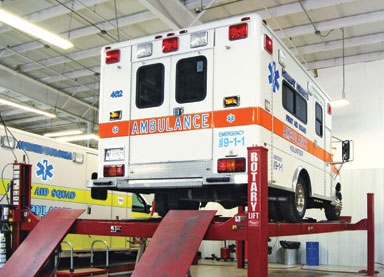Chart Smarter: Why One EMS Agency Ditched Paper for Mobile Tech
Ambulance Claims Audits: Why, How & When
During recent client audits, we found an insurer who had underpaid two clients
Was this information valuable?

During recent client audits, we found an insurer who had underpaid two clients. Naturally, the clients were thrilled to learn they were due more money. Yes, money is important, but there is so much more to be gained from performing routine claims audits. This piece will outline the why, how and when of ambulance claims auditing and give you guidelines to help perform your own audits.
Why Audit Ambulance Claims?
-
Verify services documented are what you billed to help maintain compliance
-
Catch claims processing errors – auditing acts as a Quality Improvement function for billing
-
Lessen denials and lower number of appeals
-
Improve cash flow
-
Identify under-payments (adds to cash flow) and catch overpayments (supports compliance)
-
Helps keep future payments accurate making the billing follow-up process easier
-
Determine where updated documentation training may be needed for field providers
-
Enhance ongoing education and offer meaningful feedback for billing staff
How to Audit?
There are two types of audits – concurrent or prospective (for claims that have not yet been submitted) and retrospective claims review (post-payment). Prospective audits are a great tool for monitoring new hires or as a Quality Assurance process. Retrospective reviews are especially helpful for identifying processing problems, improving cash flow by catching under-payments and ensuring compliance by detecting overpayments.
Air and ground ambulance providers should audit. Audits may be performed by a supervisor or your internal compliance officer. Keep it straightforward. Create a simple form to track findings. Focus on HCPCs code/type of service or origin/destination. For example, this month audit ALS emergency trips, next month BLS emergencies, and non-emergencies the following month. If you perform only non-emergency transports, this month’s audit could encompass trips from the Hospital to a SNF, while next month’s claims review would cover trips from the SNF to Dialysis. Look at how the claim was prepared and review the supporting documentation (i.e., was the beneficiary’s signature captured and was a Physician’s Certification Statement obtained in accordance with regulations). Another approach is to audit individual billers rotating through your staff roster to review a couple team members each month.
Remember, the person who originally prepared the claim should not be the same person doing an overview of the claim. I recommend looking at claims sent to all payers. Focus on each payer’s payment policies and regulatory requirements. Medicare and Medicaid claims are a must for review, but also look at your commercial accounts. When doing internal reviews, you may want to rotate the payers – this month review Medicare claims, next month review Medicaid and so on.
While the OIG has not given exact guidance to the ambulance industry on how to audit, they have outlined audit recommendations for physicians that can serve as a beacon for our efforts. Physicians are recommended to audit five or more medical records per government payer. The OIG suggests three methods to drawing a random sample of claims for review – from paid claims, claims by payer, or claims containing one or more of the top ten denials. Ambulance providers can easily run a denials report to see what the top types of denials your service has experienced.
ALL billing errors or documentation shortfalls should be thoroughly investigated. Not every billing error results in an overpayment; there may be additional documentation or information to support the claim payment. However, when it is determined that an overpayment exists, those overpayments should be promptly handled in accordance with the payer’s repayment guidelines.
When to Audit?
Many providers employ a third-party billing company. The ambulance company is responsible for claims submission even when billing is outsourced. Therefore, consider including a requirement in your billing contract that the billing company has an annual external review.
Internal auditing is an ongoing function. Your trip volume will dictate how often internal audits are performed. A high-volume service may perform weekly audits, while a smaller service may do monthly or quarterly internal reviews. Consistency is key. As the OIG said in their Compliance Guidance for Ambulance Suppliers, “Ambulance suppliers should consider using a baseline audit to develop a benchmark against which to measure performance. This audit will establish a consistent methodology for selecting and examining records in future audits. Comparing audit results from different audits will generally yield useful results only when the audits analyze the same or similar information and when matching methodologies are used.”
Routine external auditing is essential serving as the icing to the cake of your internal audit program. Independent, objective eyes may see something you missed, or help to augment your program with additional points of education or recommendations to improve process and cash flow. An annual external claims review is recommended.
We all know the payment and compliance horizon is not going to get any easier. Taking steps now through an internal and external claims review program will help you weather both challenges. If you want further information or need help with your auditing efforts, let us know maggie@ems-financial.com. Good luck!
Related Posts
The End of Delayed Documentation
4 Must-have Data Points for Dispatch-Billing Alignment and Maximum Reimbursement
ZOLL Pulse Blog
Subscribe to our blog and receive quality content that makes your job as an EMS & fire, hospital, or AR professional easier.
ZOLL Pulse Blog
Subscribe to our blog and receive quality content that makes your job as an EMS, fire, hospital, or AR professional easier.




